The team at Critical Mass wanted to do something totally different to show off the Canadian province of Alberta. Instead of relying solely on the beauty of breathtaking landscapes, and the epic adventures happening in them, we wanted to bring human emotion to the forefront. We wanted to do something that communicated a personal, intimate thrill that everyone could relate to.
We decided to pull the people out of the environment and remove any context that would distract the audience from the person and, most importantly, the emotion. Working with Studio Dialog, we created a series of videos; each featuring an athlete suspended in time and air, and then circled them with a Red Epic Dragon as snow blew through the scene.
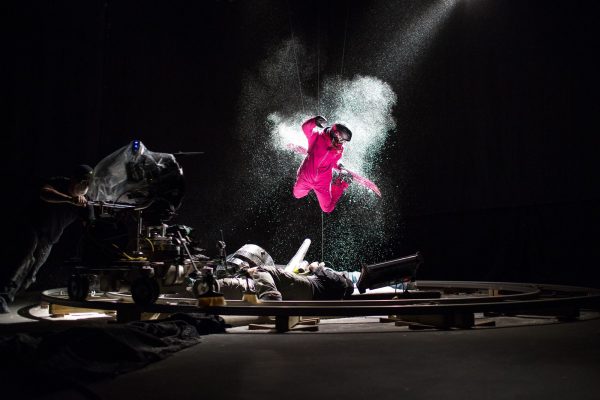
To pull the whole thing off, we had to solve three fundamental challenges:
• The piece needed to be 45 seconds, so we were going to have to determine the speed of the camera movement and the frame rate to make that possible
• How to suspend the actors
• How to achieve the snow effect without having the crew be seen
Timing
Since the concept required a 45 second take for one full lap, we had to determine how many frames we needed. To figure that out, we multiplied 45 seconds by 24 fps and got our magic number of 1080 frames.
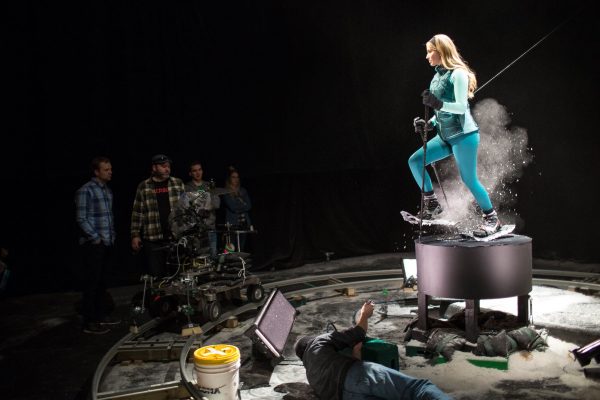
With that number in mind, we went into the studio early, set up a circular track and pushed the dolly around for some tests to determine how fast we could realistically do one lap. We were averaging somewhere between five-six seconds, and were admittedly pushing it a bit because we slid the dolly off the track a number of times during those early tests. Finally, we put all our tests to work and did the final math to determine just how fast that lap would have to be:
1080 frames / 200 fps = 5.4 seconds.
We now knew our frame rate and how fast we had to get around the track, which in itself was a challenge. For the real thing, we changed the track from our tester and made it smaller in diameter – just under 20 ft. The smaller track was easier to get around, but smoothness was a constant challenge. We were constantly shimming it trying to get it just right and remove any bumps.
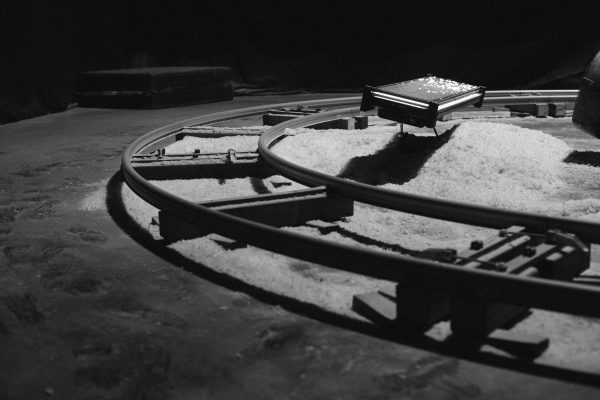
The Gear
Camera: Red Epic Dragon
Lenses: Since we were very close to the subject and needed to crop the 6K sensor on the RED Dragon to achieve the high frame rate, we needed a very wide angle to achieve our framing. We used old 16mm lenses to achieve this. Specifically we used the 8MM T2 OPTEX SUPER CINE PL
Dolly track: FilmAir Dolly Track
Lighting: An array of 6 5k lights mounted above the subject mounted on a hanging grid. We’d turn some off and on depending on the orientation of the subject.
The Actors
To achieve the sense that the athletes were frozen in the midst of a thrilling moment, we had to suspend them all with thin wires that were attached to the roof of the studio. The actors all wore vests with multiple pick points that allowed the rigging crew to lift them from different areas to achieve the most natural body position for the action they were representing. In the case of the skier performing a carve and the person snowshoeing, we put them on a pedestal and rigged them at an angle to help them lean into their movements.
It was a bit painful, but we also drilled holes in brand new snowboards and skis. The equipment was all supported with more wires, ensuring that the weight didn’t strain the actors or cause any unnatural body positions.
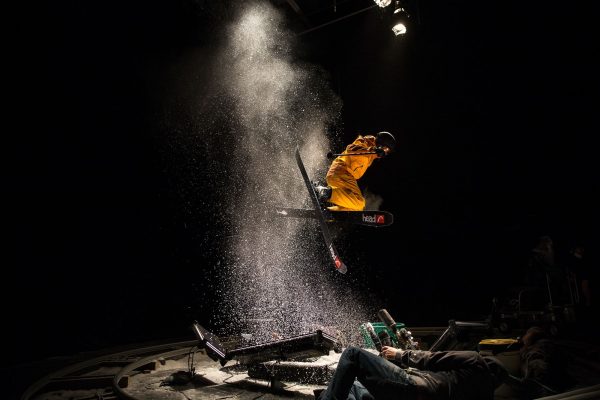
The Snow
The hardest part about the snow effect was determining where the crew could hide to actually make it happen. We set up a number of safe zones, one of which was actually inside the pedestal! While the layout was complicated, the tools were far from it. We actually used modified fans, shop vacs and leaf blowers primarily, although we did get to play around with a snow cannon a bit!
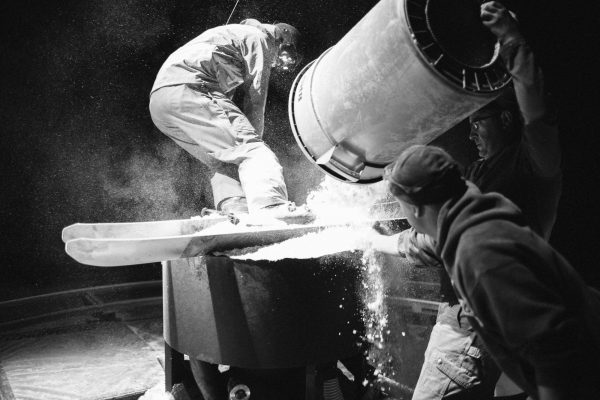
The most complicated effect was getting the snow to seemingly push away and blow out from the edge of the skis in the video of the carve. We actually lifted the track 4 inches, ran hoses underneath (which the dolly push had to jump as he went around!) that went into the pedestal. The crewmember hidden inside the pedestal directed the flow of snow, while two other people fed the shop vacs outside the curtain and another person was on the ground below the pedestal shooting ambient snow into the air.
Blowing the snow around wasn’t the only challenge. Just getting the actual snow material to look how we wanted it was a process of trial and error. We worked with the team from Arson Inc, who are involved in almost every major film and television production shot in town, and tested out a vast number of different variations of fake snow to find the right one. They all have slightly different qualities – some are more suited to a heavy blizzard, some to fine dust and others that even sparkle. We used different combinations for each video and were constantly reassessing as we were shooting to ensure that the snow felt as real and interesting as possible.
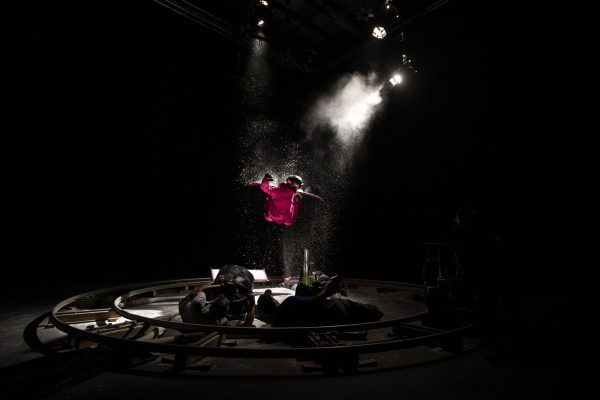
It’s safe to say we made a huge mess in the studio with all that snow. It got everywhere – except, of course, on the lens. We used a spinner lens, which is essentially a circular lens that mounts on top of whatever lens you have on your camera and spins at a high speed to keep things like water or snow from sticking and obscuring your shot.
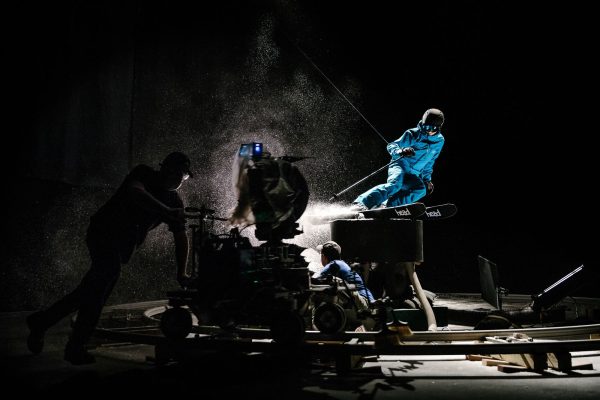
We were really happy with the finished pieces. We knew that to achieve the organic and ethereal feeling we wanted, we had to avoid the use of as many after effects as possible. Instead, with a bit of math, a lot of hard work, patience and even more fake snow, we were able to give the pieces a real and strangely relatable quality that definitely made them stand out.
Client: Travel Alberta
Agency: Critical Mass
Production Assistance: Studio Dialog / Arson Inc.
All photos courtesy of Christiaan Welzel. Do not reproduce without his expressed written consent.





